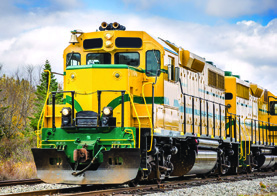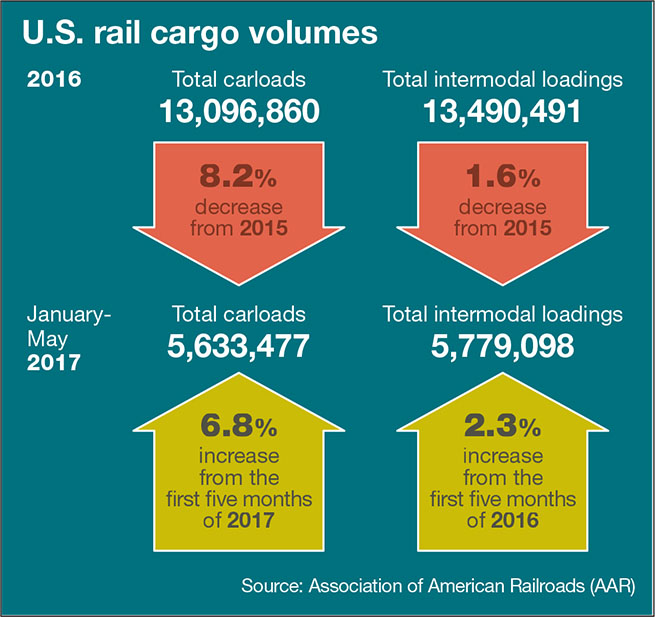2017 State of Logistics: Rail/Intermodal
Volumes and service continue on an upswing

While there may be some glimmers of economic hope on the horizon, much more needs to transpire before one can point to solid and succinct growth. That’s especially true when it comes to assessing the current state of freight railroad volumes.
According to recent data issued by the Association of American Railroads (AAR), U.S. carload volumes are up 6.8%, or 358,904 carloads, through the first five months of 2017, with the weekly carload average for May up 8.4% for the highest average per month going back to February’s 261,010. This, of course, is welcome change from the 10.3% decline for the same period a year prior.
On the rail intermodal side, 2017 container and trailer volumes through May are up 2.3%, marking the highest year-to-date tally through May for intermodal and topping 2015. What’s more, volumes from January-May 2017 mark the highest volume output for that period in U.S. history, according to the AAR data.
Like a year ago, a close look at the year-to-date volumes for carload and intermodal shows that intermodal units are outgaining rail carload volumes, something that didn’t happen prior to May 2015, but is happening with more frequency these days.
However, that doesn’t mean that intermodal is running roughshod over carloads. Instead, it speaks to a decent volume environment for both segments. Keep in mind that carloads are being bolstered by a bounce back in coal volumes due to natural gas prices rising and higher coal export levels, even though the AAR observes that coal volumes still remain low when matched up against historical norms.
“The volumes at this point of the year are beyond just pretty good,” says Tony Hatch, president of New York-based ABH Consulting. “For each month, they’re getting slightly better, and I think that will start to slow down due to a reasonably healthy economy and a reasonably healthy rail economy, and the annual comparisons are incredibly easy. Coal has not bounced back, it has stabilized and is being compared to a weak period in 2016.”
Intermodal volumes remain in a decent spot, said Hatch, who adds that volumes are steady, coupled with many industry stakeholders upgrading international intermodal expectations that could result in growth in the 5% range. Domestic intermodal, he added, has been chugging along even as it continues to run up against loose trucking capacity—something he expects to be absorbed between now and December when any impact from the ELD regulation kicks in.
As for railroad and intermodal service, Hatch says that perception of service has generally been positive, even though metrics from the AAR have continued to get modestly worse every week in 2017. However, that doesn’t equate into a crisis, he added, as most customers seem to be happy with service over all.

This is reflected in railroads running fewer, longer trains in order to lower costs, and results in longer waits between departures, a move that boosts yard dwell times. “These huge trains also tend to be slower, and the resulting average train speeds are substantially down from prior year, but in line with the long-term average,” added Larry Gross FTR Senior Consultant in the recent Logistics Management “Rail/Intermodal Roundtable.”
Read 28th Annual State of Logistics: Into the great unknown

Article Topics
Magazine Archive News & Resources
Latest in Materials Handling
Beckhoff USA opens new office in Austin, Texas Manhattan Associates selects TeamViewer as partner for warehouse vision picking ASME Foundation wins grant for technical workforce development The (Not So) Secret Weapons: How Key Cabinets and Asset Management Lockers Are Changing Supply Chain Operations MODEX C-Suite Interview with Harold Vanasse: The perfect blend of automation and sustainability Consultant and industry leader John M. Hill passes on at age 86 Registration open for Pack Expo International 2024 More Materials HandlingAbout the Author
Subscribe to Materials Handling Magazine

Find out what the world's most innovative companies are doing to improve productivity in their plants and distribution centers.
Start your FREE subscription today.
April 2024 Modern Materials Handling

Latest Resources










